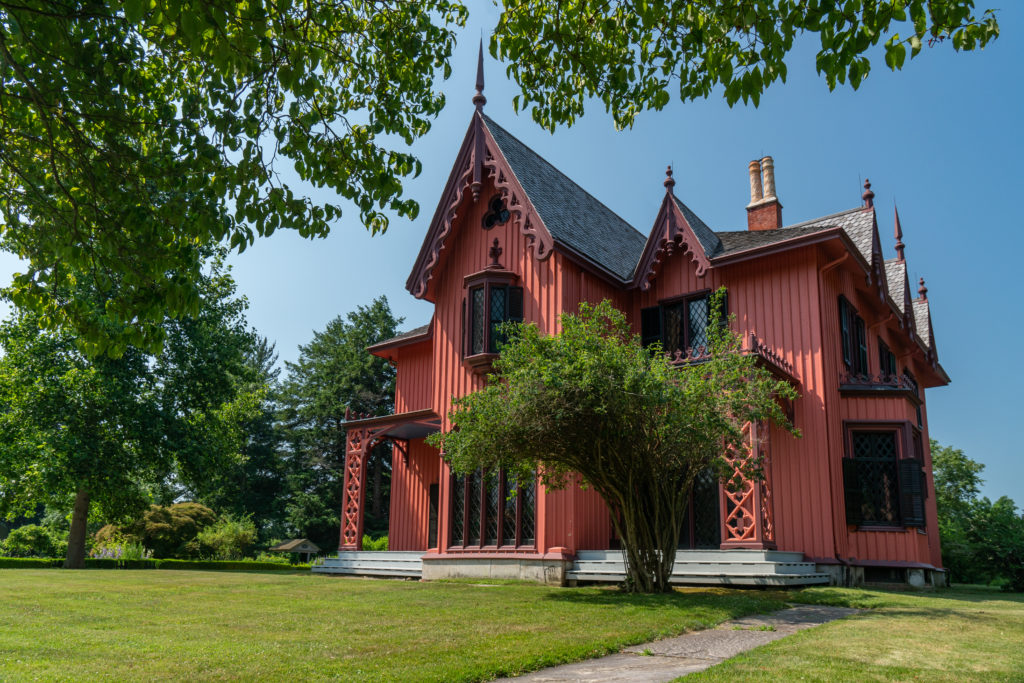 Roseland Cottage
Roseland Cottage
Gothic Revival
Nestled in the rolling hills of northeastern Connecticut, Woodstock is a quintessential New England village, with a white church and classical-style houses overlooking a tree-shaded common. In the midst of this serene setting, Roseland Cottage, with its bold color scheme and pinnacled gables stands in marked contrast to its sedate neighbors. Its Gothic Revival style, fashionable and forward-looking in 1846, expresses the confidence and individualism of Victorian America at mid-century.

Gothic Revival, according to nineteenth-century tastemaker Andrew Jackson Downing, was the ideal architectural style for “men of imagination—men whose ambition and energy will give them no peace within the mere bounds of rationality.” According to Downing, the “unsymmetrical and capricious forms” were a perfect match for men of “originality, boldness, energy, and variety of character.” Bowen’s choice of the newly fashionable style suggests he believed himself to be all those things. A house such as Roseland Cottage was a conscious effort to convey status and, especially with the Gothic Revival, the morality of the people who lived inside. Roseland Cottage made a powerful statement: Henry Bowen had returned to Woodstock a moral, successful, fashionable, and thoroughly modern man.